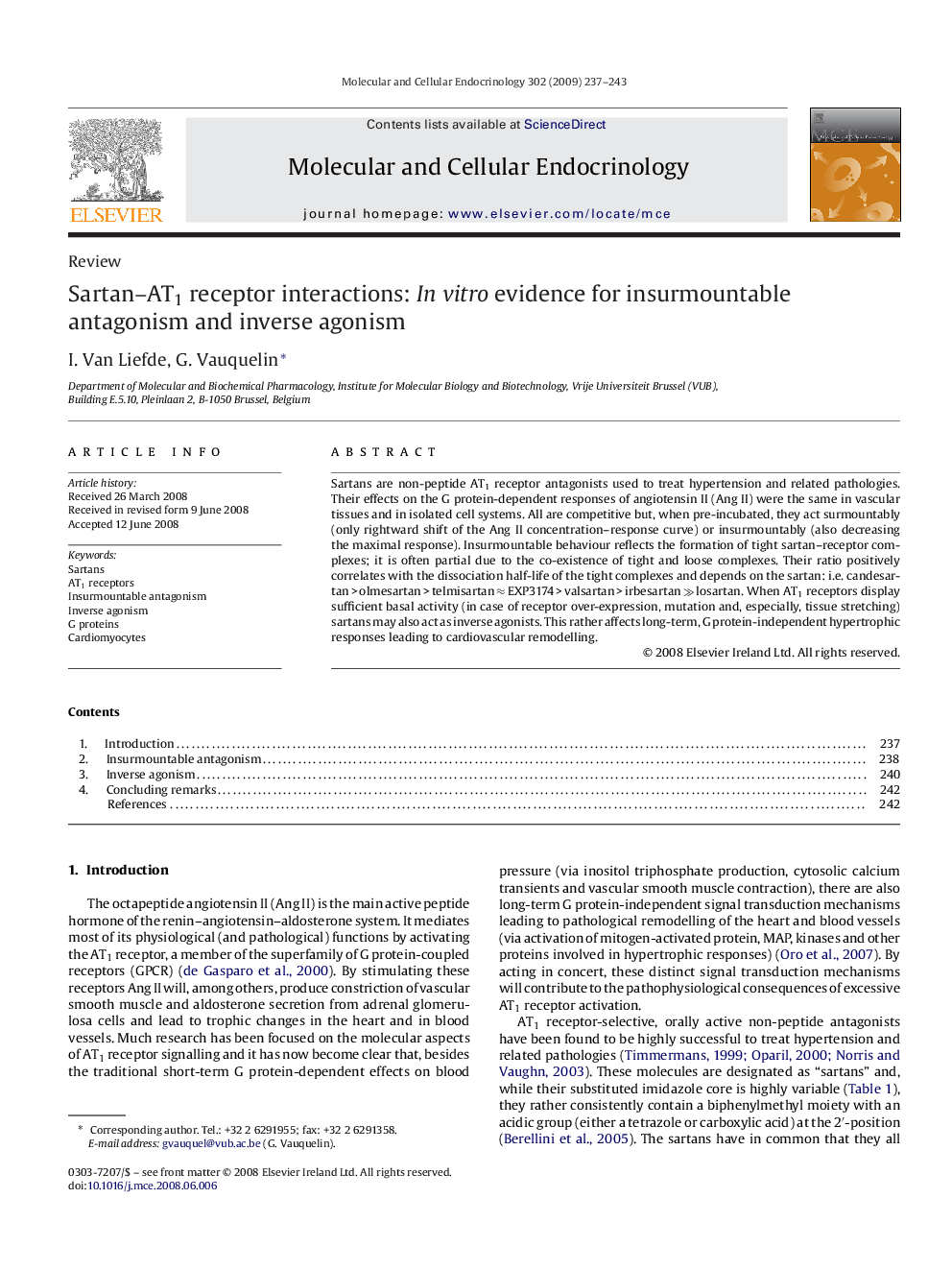| Article ID | Journal | Published Year | Pages | File Type |
|---|---|---|---|---|
| 2197224 | Molecular and Cellular Endocrinology | 2009 | 7 Pages |
Sartans are non-peptide AT1 receptor antagonists used to treat hypertension and related pathologies. Their effects on the G protein-dependent responses of angiotensin II (Ang II) were the same in vascular tissues and in isolated cell systems. All are competitive but, when pre-incubated, they act surmountably (only rightward shift of the Ang II concentration–response curve) or insurmountably (also decreasing the maximal response). Insurmountable behaviour reflects the formation of tight sartan–receptor complexes; it is often partial due to the co-existence of tight and loose complexes. Their ratio positively correlates with the dissociation half-life of the tight complexes and depends on the sartan: i.e. candesartan > olmesartan > telmisartan ≈ EXP3174 > valsartan > irbesartan ≫ losartan. When AT1 receptors display sufficient basal activity (in case of receptor over-expression, mutation and, especially, tissue stretching) sartans may also act as inverse agonists. This rather affects long-term, G protein-independent hypertrophic responses leading to cardiovascular remodelling.
